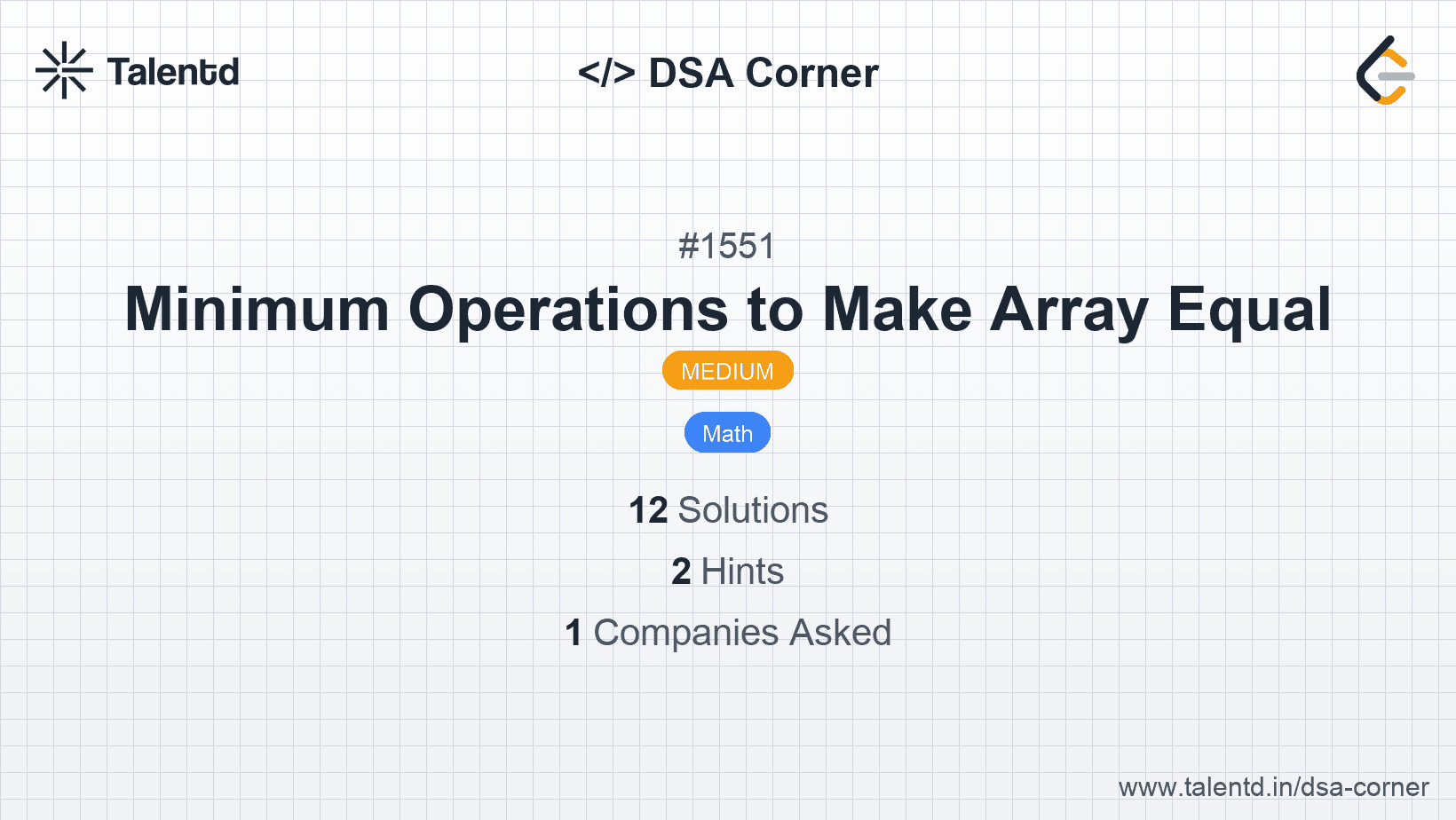
Sponsored
Sponsored
The array arr follows the pattern (2 * i) + 1, making it an arithmetic sequence of odd numbers. The median of the arithmetic sequence is the middle element for odd n and the average of two middle elements for even n. Since operations have to balance the values to become equal, the number of operations required is essentially the sum of steps needed to make the greater half equal to this median, iterating from the middle outwards.
Time Complexity: O(1), since the solution simply computes a formula.
Space Complexity: O(1), as no additional space is required.
1def min_operations(n):
2 half = n // 2
3 return half * (half + (n % 2 == 0))
4
5# Example usage
6print(min_operations(3)) # Output: 2
7print(min_operations(6)) # Output: 9The function calculates how many operations are needed by focusing on one half of the array to compute the total steps the elements in this half must take to equalize. The variable half represents the number of operations contributed by each of these elements.
This approach demonstrates a naive simulation of operations: iteratively balance the array elements by focusing on reducing extreme disparities between elements. This is not intended for efficiency but understanding the process.
Time Complexity: O(n^2), due to nested iterations looking for disparities.
Space Complexity: O(n), to store the array.
1
This technique creates the array and iteratively applies moves to gradually level the array. It evaluates each pairing of elements in a nested loop fashion, conducting operations until all elements stabilize at the target value.